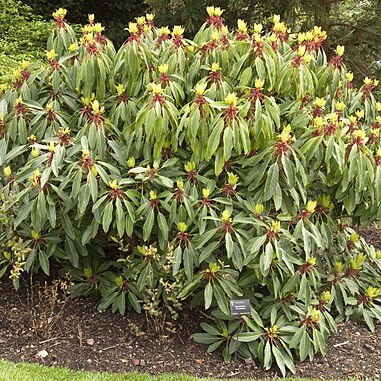A small evergreen tree. It grows about 3 m high. It can be 15 m high. The trunk is thick. The bark is grey brown. Branching starts low down. The leaves are oblong and leathery. The leaves can be 20 cm long. The stalks are red and 5 cm long. Both male and female flowers are in racemes in the axils of leaves. They are very small. The fruit are fleshy and have one seed inside.


